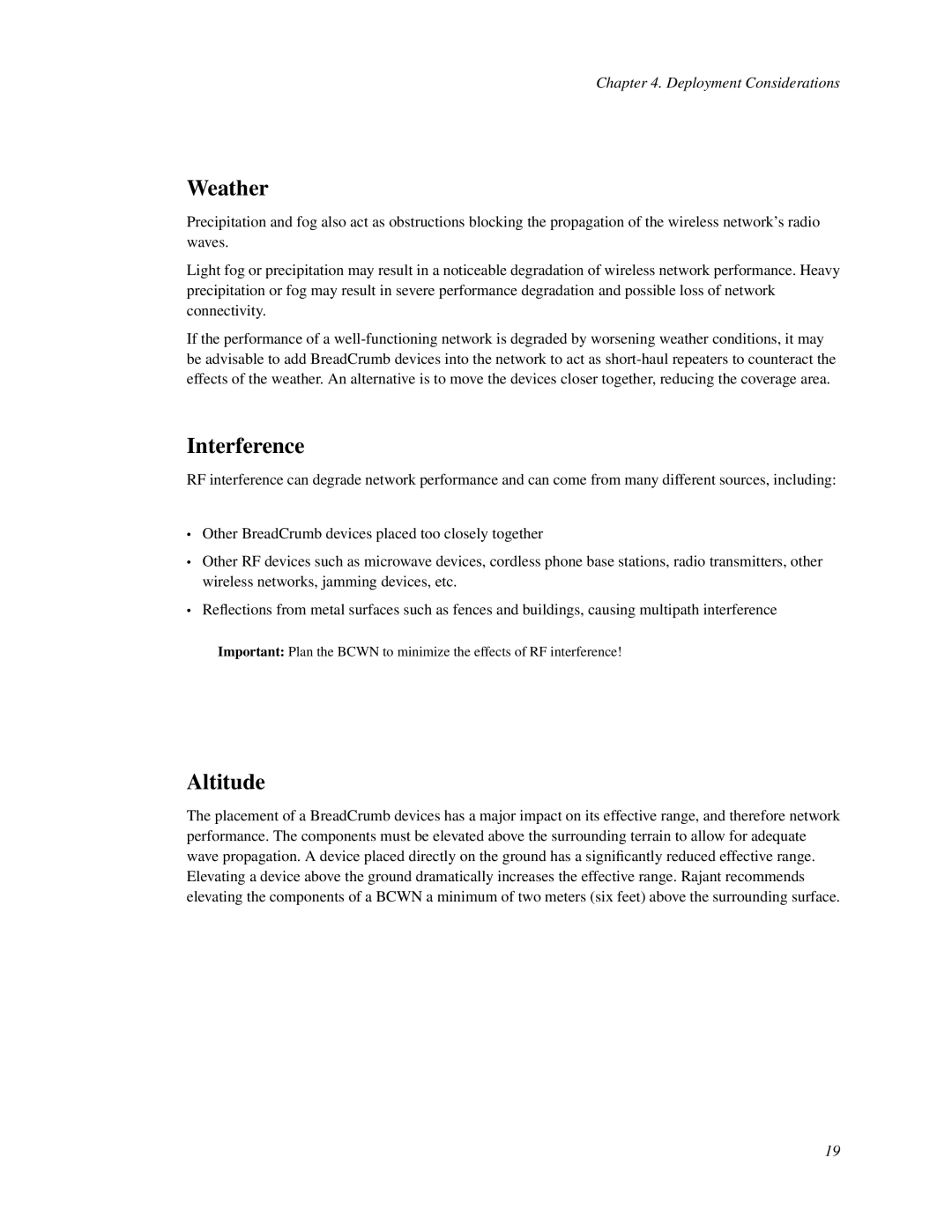Chapter 4. Deployment Considerations
Weather
Precipitation and fog also act as obstructions blocking the propagation of the wireless network’s radio waves.
Light fog or precipitation may result in a noticeable degradation of wireless network performance. Heavy precipitation or fog may result in severe performance degradation and possible loss of network connectivity.
If the performance of a
Interference
RF interference can degrade network performance and can come from many different sources, including:
•Other BreadCrumb devices placed too closely together
•Other RF devices such as microwave devices, cordless phone base stations, radio transmitters, other wireless networks, jamming devices, etc.
•Reflections from metal surfaces such as fences and buildings, causing multipath interference
Important: Plan the BCWN to minimize the effects of RF interference!
Altitude
The placement of a BreadCrumb devices has a major impact on its effective range, and therefore network performance. The components must be elevated above the surrounding terrain to allow for adequate wave propagation. A device placed directly on the ground has a significantly reduced effective range. Elevating a device above the ground dramatically increases the effective range. Rajant recommends elevating the components of a BCWN a minimum of two meters (six feet) above the surrounding surface.
19
